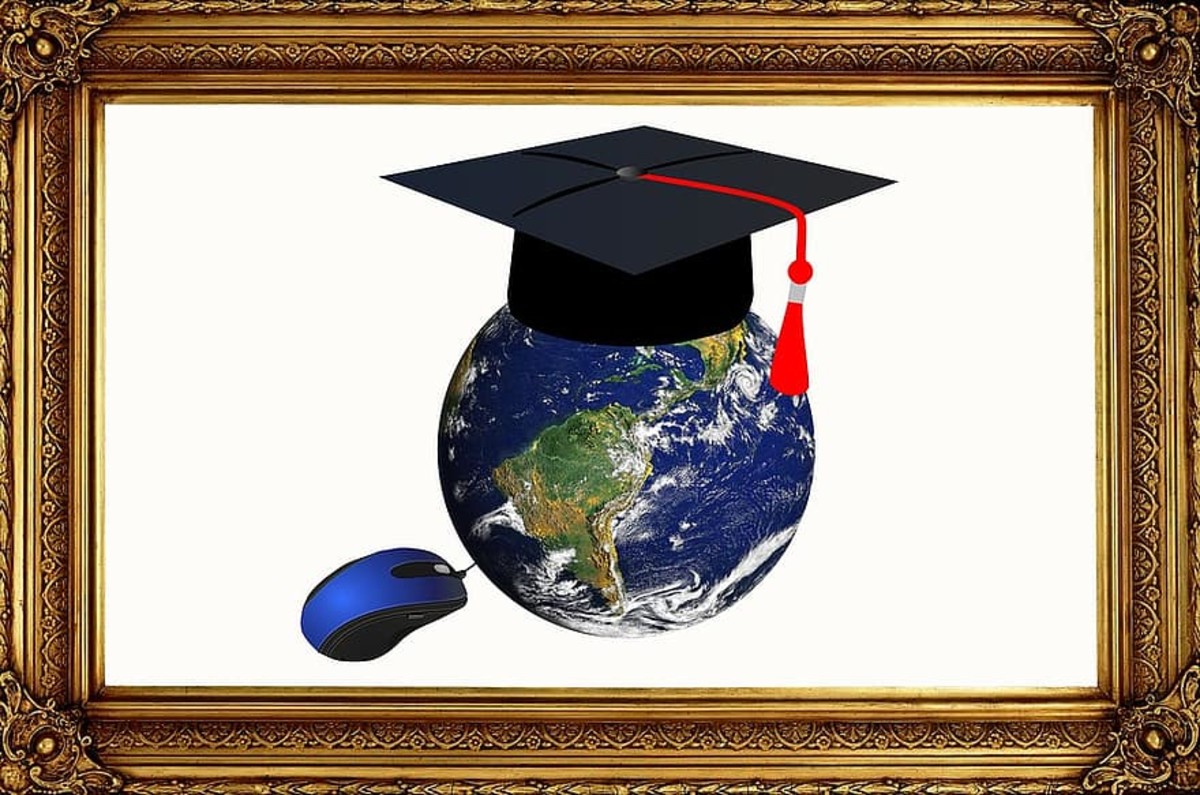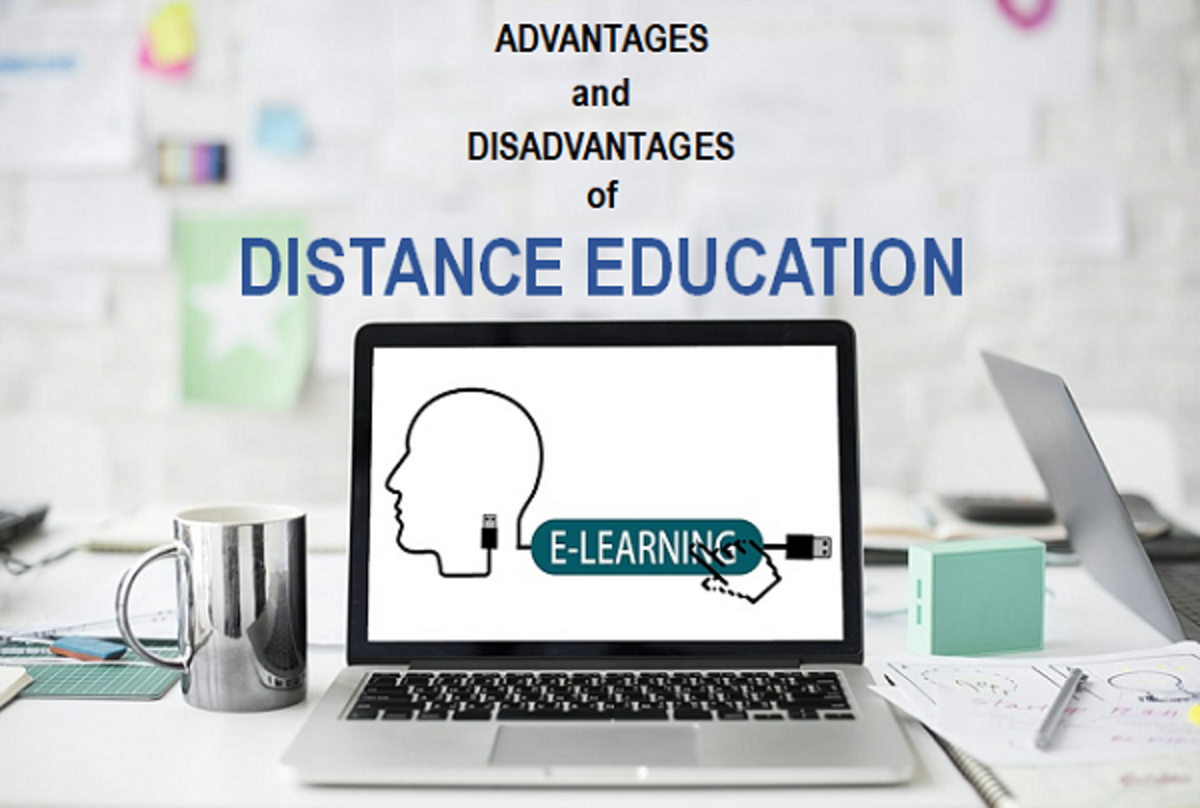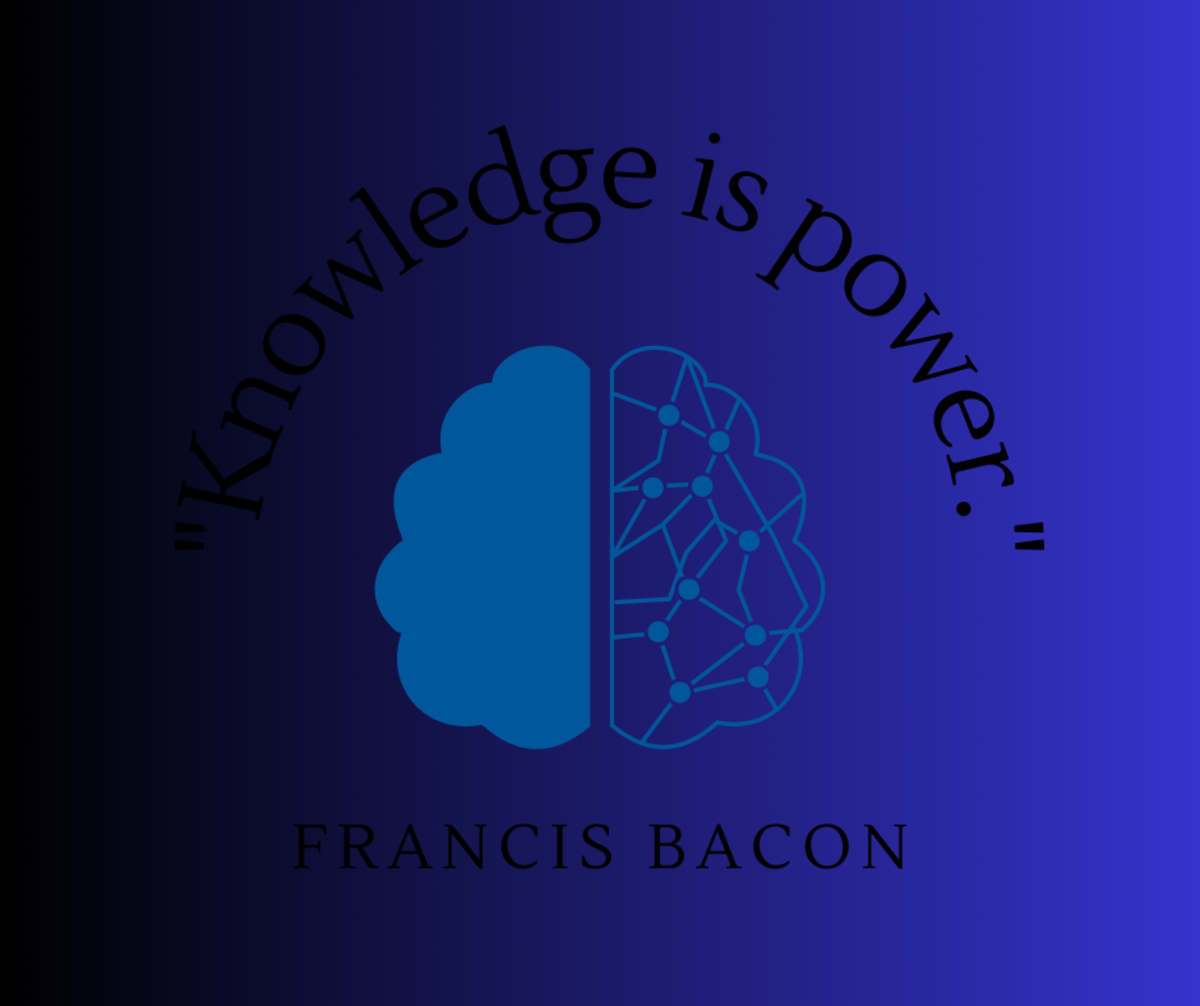Evolution of Education
Education has evolved. While once education only took place in brick and mortar classrooms, it has changed and grown, now available online or in hybrid courses where students may meet in person some days and online on others. Computer technology and advancements, along with globalization, have moved education from static to dynamic. This paper will examine the evolution from traditional settings to the Internet, the future of education, and the effects of and future of globalization.
![Old School by By The B's (Flickr) [CC-BY-2.0 (http://creativecommons.org/licenses/by/2.0)], via Wikimedia Commons Old School by By The B's (Flickr) [CC-BY-2.0 (http://creativecommons.org/licenses/by/2.0)], via Wikimedia Commons](https://usercontent1.hubstatic.com/7080874.jpg)
Evolution from Traditional Settings to the Internet
The traditional setting for adult and post-secondary education was a brick and mortar campus. It was fine when education followed a simple path: students went to high school then went to college. Students were often "only" students or may have worked part time jobs. Non-traditional (older) students were often looked down on. In some cases, evening classes or weekend classes weren't offered, or if they were, people thought they were less worthy. The purpose of education was just that -education. It often had no practical application in the real world.
Keller (2009) pointed out that distance learning was available since the early nineteenth century, but didn't really seem a boom until the proliferation of the personal home computer. "With the advent of high-power personal computers, broadband communications, and digital video in the 1990s, telecommunications-based education started to realize its potential" (Keller, 2009, p. 32). The Internet opened up the field of possibilities for distance education, allowing instructors to share videos, textbooks, graphics and communicate both synchronously and asynchronous, as the courses demanded.
Rogerson-Revell (2007) agrees that as online technology and computer usage grew and became more user-friendly and low cost, the Internet became the key medium for education. Platforms, such as WebCT/Blackboard, Manila, Etudes, and Moodle came into existence and offered pre-packaged learning systems for universities and continuing education facilities to use as the backbone of their online programs (Rogerson-Revell, 2007).
There was also a shift, potentially related to globalization and the new business model, that changed the focus of adult and post secondary education from knowledge to practical skills and immediate usability of skills. Many online classes and online universities (such as Kaplan University, University of Phoenix, and Capella University) are trying to help people advance themselves in their careers, and it is not looked down upon as it previously was- the number of non-traditional students is growing and has been growing. In fact, Kern (2010) reported that the Sloan Consortium and Babson Survey Research Group found that in 2008, one quarter of the nearly twenty million students who were enrolled in higher education were enrolled in a minimum of one online course during their falls semester, a seventeen percent increase since 2007. Kern also reported that of approximately 4,500 higher education institutions in the US, 3,300 offered online courses and 1,700 of those offered at least one completely online degree in 2009.
It's not just fully online courses that are attracting learners. A new evolution in education is the hybrid course. A hybrid course combines both online and traditional education, allowing the students and faculty to meet in person and online to complete different tasks within the course. Rogerson-Revell (2007) pointed out that hybrid tools, such as Macromedia's Dreamweaver and CALL's Hot Potatoes, are user-friendly enough for anyone with basic to moderate computer skills to use.
While many people focus on the use of the Internet in higher education, it is also seeing growth in the continuing adult education field. Donovant (2009) believes that "Within the field of adult education a paradigm shift, or at least a paradigm creep, is taking place as a result of advances in technology (p. 227). Keller (2009) states that, "With a minimal investment in facility, faculty, and delivery infrastructure, distance learning enables hospitals and laboratories to provide critical training for employees across sites" (p. 32). Retention issues can also be addressed. While students may forget up to about 70% of what they learn in training, distance learning (especially computerized distance learning) can provides students with ways to review and refresh their knowledge using multimedia versions of classes and programs that can be access "anytime, anywhere" (Keller, 2009). Keller (2009) further points out that online education gives an additional skill set to its users: they are forced to also become proficient with the computer they use for training, allowing a "double-whammy" where the students learns both about their course subject but also about technology.
The Future of Education: Examination and Predictions
Brooks (2010) points out that as technology grows and advances, the expectation is that more college instructors will use that technology for their courses. One potential shift that would help faculty would be the creation of online and face-to-face (blended) support for faculty. That way, faculty would learn to use the technology as both students and instructors. It would also potentially help to inspire hybridizing classes (Brooks, 2010).
Conceicao (2007) states that "online education is here to stay" (p. 91). He believes that instructors will need to grow and stretch themselves, learning both the strengths and weaknesses of online education and how to make themselves effective educators in the new medium. While some existing strategies for teaching are still appropriate, it will take education of the educators to become comfortable and effective with new technologies, including iPods, webcasts, and other student information systems (Conceicao, 2007).
Havas (2009) believes that while higher education was once "dominated" by universities, the shift to non-traditional education and online universities is likely to continue and grow. He argues that cost efficiency is driving education, and will continue to do so. The funding of colleges and universities is already being cut and cost-saving measures are being put into place. Offering online classes can help with these cuts. "There is already a very high enrollment in [higher education], leading to a fundamental transition from elite universities of the previous centuries to ‘mass production’ of degrees" (p. 427).
Life-long learning is another trend that is growing. Students are no longer "traditional" (ages 18 to 29). Instead, students may be from all age and ethnic groups. This also helps to push the growth of online education, with many of these non-traditional learners choosing to attend online classes for various reasons (Havas, 2009).
Online education is also not just for higher education and continuing education. A growing contingency of online education is for high school and even elementary schools. Kowch (2009) discussed the growth of cyber-charter schools. While only 2% of US students attend charter school, in 2008 over 1 million students attended online or blended classes in 44 states. Kowch estimates that, based on a 2-year growth of 47%, there may be up to a 30% annual growth in the future. Levin and Fullan (2008, as cited in Kowch, 2009) stated that, "the central lesson now evident is that sustained improvement in student outcomes requires a sustained effort to change teaching and learning practices in thousands and thousands of classrooms" (p. 43). These classrooms may not all be traditional classrooms; with the current growth, these may soon be online or blended/hybrid classrooms. North Carolina is one state that, beginning in 2007, launched a Virtual Public School to deliver online courses to elementary and middle grade students, reporting that in the 2006/2007 school year of 60 online programs, 38% offered classes to elementary students and 62% offered them to middle schools.
Online education is also being seen as a new tool for disabled students. Repetto, Cavanaugh, Wayer, and Liu (2010) discovered that "virtual schools have closed achievement gaps and increased completion rates among students with disabilities" (p. 91). Many students with disabilities left schools due to issues with peers, including feeling "aged out," having problems connecting, and poor self esteem (Repetto, Cavanaugh, Wayer, and Liu, 2010). Online schools allowed that followed the "5Cs" helped them to stay connected and stay in schools. The 5Cs followed in the high schools are connections, caring, climate, curriculum, and control.
![Hands collaborating in co-writing or co-editing or co-teaching in online education by Left rj (Own work) [Public domain], via Wikimedia Commons. Hands collaborating in co-writing or co-editing or co-teaching in online education by Left rj (Own work) [Public domain], via Wikimedia Commons.](https://usercontent1.hubstatic.com/7080884.jpg)
Current Global Trends and Their Effects on Education
According to Cantwell and Maldonado-Maldonado (2009) globalization is a fairly new term in higher education, only first appearing approximately fifteen years ago. They argue whether or not it even exists, pointing out that while many consider it to be saying that higher education institutions must now produce "globally relevant knowledge" (p. 289), this appears to not be true. They do not believe that higher education institutions are
coherent organizations whose movements can be orchestrated by administrators according to transcendent logic. Rather, they are loose coupled organizations that simultaneously move in multiple directions at different rhythms and with varying objectives. Attempts to rationalize higher education have often produced irrational results (p. 291).
Cantwell and Maldonado-Maldonado seem to be comparing organizing universities to herding cats: possible, but improbable.
Others, however, see the globalization of higher education as the business model that is invading higher education institutions. Many faculty members and institutions see it as the business-based model and the exportability of education. Dewey and Duff (2009) point out that our "global era requires globally competent citizens" (p. 491). People are more connected and, in order to be successful, they must be able to communicate and work outside of their comfort zone and their own environment (Dewey & Duff, 2009). Xiaoping (2008) see globalization as a dynamic process, one in which higher education institutions embrace their diversity, working within their own country's diverse cultural and ethnic groups and then within the world. He points out that since the 1950s, higher education institutions have thought of themselves as being part of a community of scholars, and this often reached across national boundaries. The more modern globalization, however, appears to be mostly commercialization, allowing schools to export education and attract international students (Xiaoping, 2008).
Some worry about this potential "'bums on seat' approach to attract considerable private income from international students to compensate for the reduction in public funding" (Xiaoping, 2008, p. 348). With online universities reaching across national borders and allowing international students to attend US institutions without being in the US, there are questions being raised. However, this open door approach has been to the benefit of students, allowing them to electronically cross borders that would otherwise be closed to them, allowing the students to access greater opportunities to pursue education in other countries (Xiaoping, 2008). This same flexibility, though, can also add to the already existing problems with the status quo while poor individuals are kept from these opportunities as the rich gain even more opportunities that the poor cannot compete with. Xiaoping (2008) points out that the inequality of the marketplace means that the poor will be "deprived of the right to have a say about the curriculum, quality standards, and many other educational elements" (p. 352).
Dodds (2008) also sees globalization as a negative effect on higher education, pointing out that it may increase the power imbalance between nations, institutions, and languages. This is because English becomes the dominant language as "mega-universities" with over 100,000 students concentrate economic power (Dodds, 2008). Dodds (2008) also sees higher education institutions as being transmitters of technology and training, tying together industry and education and leading to calls for more applied research causing practical research to take over basic research. Globalization also changes the nature of information, according to Dodds. These changes can be negative or positive. The three changes Dodds (2008) reports are "increasing access to information, commodifying information, and contesting previously privileged information" (p. 512). This allows for greater access to information, but it also changes the value of information.
Conclusion
Education has evolved and changed, allowing for greater international access, greater access for the disabled and K-12 learners, and greater access for non-traditional and traditional students in higher education. Education has moved from static to dynamic, and the changes are continuing.
References
Brooks, C. (2010). Toward 'hybridised' faculty development for the twenty-first century: blending online communities of practice and face-to-face meetings in instructional and professional support programmes. Innovations in Education & Teaching International, 47(3), 261-270. doi:10.1080/14703297.2010.498177.
Conceição, S. (2007). Setting directions for the future of online and adult education. New Directions for Adult & Continuing Education, (113), 87-91. doi:10.1002/ace.250.
Dewey, P., & Duff, S. (2009). Reason before passion: faculty views on internationalization in higher education. Higher Education, 58(4), 491-504. doi:10.1007/s10734-009-9207-z.
Dodds, A. (2008). How does globalisation interact with higher education? The continuing lack of consensus. Comparative Education, 44(4), 505-517. doi:10.1080/03050060802481538.
Donavant, B. (2009). The New, Modern Practice of Adult Education: Online Instruction in a Continuing Professional Education Setting. Adult Education Quarterly, 59(3), 227-245. Retrieved from Academic Search Premier database.
Eaton, J. (2010). Accreditation and the Federal Future of Higher Education. Academe, 96(5), 21-24. Retrieved from Academic Search Premier database.
Havas, A. (2009). Universities and the emerging new players: building futures for higher education. Technology Analysis & Strategic Management, 21(3), 425-443. doi:10.1080/09537320902750905.
Green, N., Edwards, H., Wolodko, B., Stewart, C., Brooks, M., & Littledyke, R. (2010). Reconceptualising higher education pedagogy in online learning. Distance Education, 31(3), 257-273. doi:10.1080/01587919.2010.513951.
Keller, D. (2009). Distance learning works when gas and airfares skyrocket. MLO: Medical Laboratory Observer, 41(3), 32-37. Retrieved from Academic Search Premier database.
Kern, R. (2010). Maximizing an Online Education. U.S. News & World Report, 147(5), 46-47. Retrieved from Academic Search Premier database.
Kowch, E. (2009). New Capabilities for Cyber Charter School Leadership: An Emerging Imperative for Integrating Educational Technology and Educational Leadership Knowledge. TechTrends: Linking Research & Practice to Improve Learning, 53(4), 41-48. doi:10.1007/s11528-009-0305-7.
Oliver, K., Kellogg, S., Townsend, L., & Brady, K. (2010). Needs of elementary and middle school teachers developing online courses for a virtual school. Distance Education, 31(1), 55-75. doi:10.1080/01587911003725022.
Repetto, J., Cavanaugh, C., Wayer, N., & Feng, L. (2010). VIRTUAL HIGH SCHOOLS: Improving Outcomes for Students With Disabilities. Quarterly Review of Distance Education, 11(2), 91-104. Retrieved from Academic Search Premier database.
Rogerson-Revell, P. (2007). Directions in e-learning tools and technologies and their relevance to online distance language education. Open Learning, 22(1), 57-74. doi:10.1080/02680510601100168.
Stallings, D. (2000). The Virtual University: Legitimized at Century's End: Future Uncertain for the New Millennium. Journal of Academic Librarianship, 26(1), 3. Retrieved from Academic Search Premier database.
Westbrook, V. (2006). The virtual learning future. Teaching in Higher Education, 11(4), 471-482. doi:10.1080/13562510600874276.
Xiaoping, J. (2008). Towards the internationalisation of higher education from a critical perspective. Journal of Further & Higher Education, 32(4), 347-358. doi:10.1080/03098770802395561.









